1. Introduction
Physiologic sneezing is a complex protective reflex experienced by most—if not all—humans and many mammals, triggered when nasal mucosa is exposed to potentially noxious stimuli. Photic sneezing (affecting about a fifths of mankind) is special in the sense that it lacks any easily conceivable usefulness (physiologic function) and that the stimulus for activation of the reflex pattern is not—as in plain vanilla sneezing—a noxious substance, but light—mostly sunlight—acting on the retina. Our dog Boo and the Berenstain Papa Bear are dearly loved photic sneezers [Photo 1].
Subsequent to excitation of receptors in the nasal mucous membranes, sensory information is transmitted mainly via the naso-palatine nerve (branch of maxillary nerve; NC V2), while accompanying parasympathetic afferent fibers run to the pterygo-palatine ganglion and then to the superior salivatory nucleus. A putative sneezing center in the medulla is activated and a complex motor pattern initiated: a deep inspiration is triggered, accompanied by head tilting to the back, eye closure and naso-pharyngeal and glottis closure. The airway closure allows for intrathoracic pressure to build up following contraction of expiratory muscles, to be followed by head tilting to the front, glottis opening and an explosive expulsion of air from the lungs (and hopefully of the noxious stimulus from the airways) [Brubaker, 1919; Songu & Cingi, 2009].
Photic sneezing is similar with the fundamental difference that the described motor pattern is triggered by bright light (optic nerve; NC II); when the eyes are closed no photic sneezing can be elicited. To explain the activation of sneezing by light two theories have been put forward: parasympathetic generalization and optical-trigeminal summation.
William Spencer Watson (1836-1906) and then Albert Philson Brubaker (1852-1943) suggested that adjacently located parasympathetic branches are co-activated (parasympathetic generalization) [Watson, 1875; Brubaker, 1919] [Photo 2].
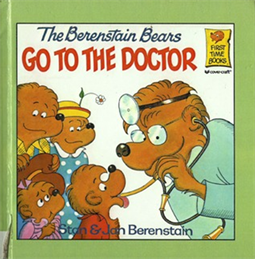
(a) Book cover, Random House, 1981
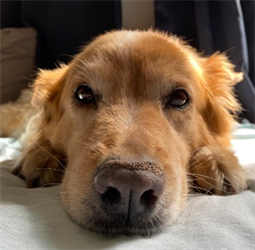
(b) Boo, adopted 2009 from Miami Animal Shelter
Photo 1. (a) Berenstain Papa Bear sneezes when the sun shines brightly, in the preschool children story The Berenstain Bears Go to the Doctor [Berenstain & Berenstain, 1981; OMIM 100820]. (b) So does Boo, our family dog.
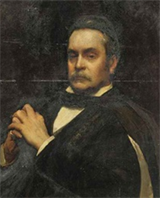
(a) William Spencer Watson (1836-1906)
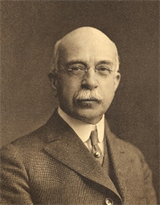
(b) Albert Philson Brubaker (1852-1943)
Photo 2. (a) William Spencer Watson (1836-1906); portrait painting authored by his son, painter of national renown, George Spencer Watson (1869-1934). The father of William (grandfather of George) was John Watson MD, who for about fifty years had his consultory in Bloomsbury, at No. 6, Southampton-street; he was likely the model for Dr. Watson, the partner of Sherlock Holmes in most of Sir Arthur Conan Doyle (1859-1930) detective stories [Harrison, 1972]. (b) Albert Philson Brubaker (1852-1943) descendant of early German families in Pennsylvania graduated from Jefferson Medical College in 1874 and remained a resident of Philadelphia for the rest of his life. He became professor of physiology and hygiene at the College. In addition to his Text-Book of Human Physiology Dr. Brubaker authored 1919 in JAMA a paper titled The Physiology of Sneezing. Fotograph reproduced with kind permission of the family (Susan Brubaker Knapp).
Lisgar Bowne Eckhardt (1911-1994) put forward the optical-trigeminal summation theory, essentially suggesting that stimulation of the optic nerve triggers the cross-activation of the trigeminal nerve, due to anatomical proximity [Eckhardt et al., 1943]. Eckhardt was a 1931 graduate of DePauw University (Indiana) where his father, Lisgar Russell Eckardt (1876-1946), was a long-time professor of Philosophy. After AM degree 1933 from Ohio University, he went on to earn MD Ph.D. from Cornell.
The measured latency of the photic sneeze reflex of 9.9 seconds (95% CI 8.6 - 12) clearly indicates the complex polysynaptic nature of the phenomenon [Morris, 1989].
2. Sneezing and Sexual Arousal
The mechanism involved in initiating sneezing—while still poorly understood—has some similarity with sexual arousal (erection) and is contingent on substantial parasympathetic activation [Bhutta & Maxwell, 2008]. The terminal part of sneezing (explosive air exhalation) can be perceived as the functional equivalent of (sympathetically mediated) ejaculation. Anatomically, erectile tissue is present also in the nose, mainly in the inferior turbinate, but also in the middle turbinate and anterior septum [Ng et al., 1999]. Human sexual pheromones induce swelling of erectile tissue, nasal and otherwise [Mazzatenta et al., 2016]. Not surprisingly, phosphodiesterase V inhibitors (-afildrugs for erectile dysfunction) and alpha-blockers (-osindrugs for prostatic hypertrophy) are well known for inducing a stuffy nose, as an adverse reaction. The flip side of the phenomenon is also recognized: alpha agonist vasoconstrictors such as phenylephrine are useful not only as treatment of priapism but more commonly as nasal decongestants.
While slightly overstated there is nevertheless some truth in the statement of Jay Herman Schmidt (1925-1999) that the nose is a sexual organ [Schmidt, 1963; Chester, 2007]. The ENT specialist was the son of Sidney (*1899) and Esther Geitner Schmidt (*1903) from Cook County, Illinois. He graduated 1946 from the University of Illinois College of Medicine and after residency served on the Faculty at Chicago Medical School. The intrepid doctor became Honorary Consul of Burundi for a number of North- and Midwestern States and, according to the TheEmporia Gazette from Emporia, Kansas from Friday, November 16, 1973 also an Honorary United Nations Physician. Together with Paul Neimark he published a number of books in the genre medical advice [Photo 3]. He was married to Nancy K Springer (*1938).
Similar associations between nose and sexuality were made earlier by German otolaryngologist and friend of Sigmund Freud, Wilhelm Fliess (1858-1928); Fliess published in 1897 a work on the relations between the nose and the female sexual organs [Fliess, 1897].
Certainly, there is pleasure to be derived from sneezing as some people deliberately look up at the sun for the sheer joy of sneezing [Birch, 1959; Askenasy, 1990].
3. Sneezing and Epilepsy
John Hughlings Jackson (1835-1911), referred to as the “Father of English Neurology” [Photo 4] described the occasional sneeze as “a sort of healthy epilepsy” [Taylor, 1958; Kofman, 1964]. Edward Liveing (1832-1919), an English contemporary of Jackson, speaks in his famous book On Megrim published 1873 of sneezing as a miniatureepilepsy [Liveing, 1873].
Of course, neither Jackson nor Liveing were the first ones to recognize similarities between epilepsy and sneezing. Canadian neurologist and researcher Oscar Kofman (1923-2012), authored a must read paper titled Paroxysmal Sneezing where he addresses i.a. historical aspects of the similarity between sneezing and epilepsy. Citing Owsei Temkin (1902-2002) he mentions Soranus of Ephesus [Temkin, 1945; Kofman, 1964; Kofman, 2012]; Soranus who practiced medicine at Alexandria and Rome in the reigns of Trajan and Hadrian (ca 100 CE), described sneezing as part of the epileptic aura. On a different note, he recommended post coitus sneezing to women to prevent pregnancy. This is inspired by Aristotle (384-322 BC) who recommends to women to…keep from…sneezing,because as it violently shakes the body,it is a great enemy to conception [Photo 5].
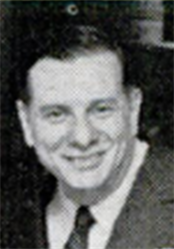
(a) Jay Herman Schmidt (1825-1999) in the 1970s
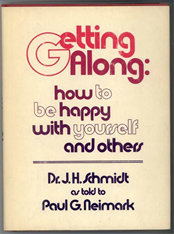
(b) Book Cover 1979 G.P. Putnam’s Sons NY
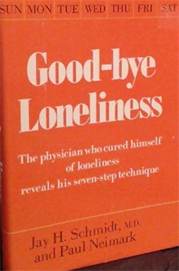
(c) Book Cover 1979 Stein & Day Pub
Photo 3. Good-bye Loneliness and Getting Along are co-written by Jay H Schmidt with Paul G Neimark. Good-bye Loneliness received the Ambassador Book of the Year Award from the English Speaking Union. The Award (1986-2011) recognized important literary and non-fiction works that contributed to the understanding and interpretation of American life and culture.

(a) John Hughlings Jackson (1835-1911)

(b) Macdonald Critchley (1900-1997)

(c) Edward Liveing (1832-1919)
Photo 4. (a) Book cover of the Jackson biography titled Father of English Neurology, authored by Macdonald and Eileen Critchley. (b) Macdonald Critchley CBE distinguished neurologist and prolific writer (c) Edward Liveing author of the treatise On Megrim; Megrim is not only the name of a flatfish (Lepidorhombuswhiffiagonis) but also an old English medical term for migraine [Critchley, 1998; Martinez et al., 2013].
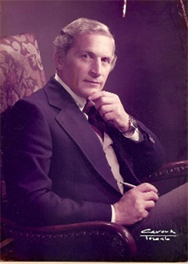
(a) Oscar Kofman (1923-2012)
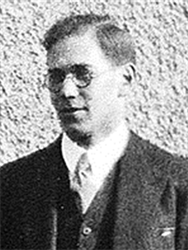
(b) Owsei Temkin (1902-2002)

(c) Soranus of Ephesus (98-138)
Photo 5. (a) Canadian neurologist and researcher Oscar Kofman. (b) Owsei Temkin Professor of the History of Medicine at Johns Hopkins University. His book The Falling Sickness is a superb and highly successful history of epilepsy from the Greeks to the beginnings of modern neurology. (c) Soranus of Ephesus considered sneezing part of the epileptic aura.
Ibn Sina (Avicenna) (980-1037) according to Hieronymus Cardanus (1501-1576) also noticed both similarity and differences between sneezing and epilepsy and stated that sternutatio est levis quadam Epilepsia & Epilepsia est magna & vehemans sternutatio [Cardanus, 1663].
Johannes van Beverwijck (Beverovicius) (1594-1647), a Dutch doctor and writer, also citing Ibn Sina (Avicenna) stated that Niesseneen kleyne Vallende-sieckte (Sneezing is a small drop attack) [van Beverwijck, 1644] [Photo 6].
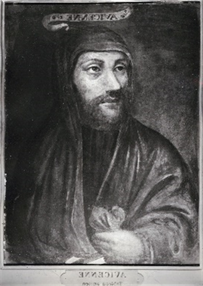
(a) Ibn Sina (Avicenna) (980-1037)
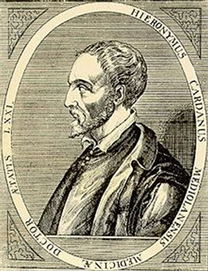
(b) Hieronymus Cardanus (1501-1576)
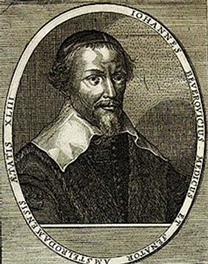
(c) Johannes van Beverwijck (1594-1647)
Photo 6. (a) Ibn Sina (Avicenna) (980-1037) (b) Hieronymus Cardanus (1501-1576) (c) Johannes van Beverwijck (1594-1647).
4. Obstinate Sneezing
Obstinate sneezing in a female was observed by Harry H Shilkret (1898-1975) and diagnosed as psychogenic [Shilkret, 1949]. Obstinate hiccup (singultus), a condition generally associated with elderly males, when occurring in females is also mostly of psychogenic origin [Petroianu & Brunnengraber, 1992; Petroianu, 2019; Petroianu & Lorke, 2020].
The Shilkret family was musically inclined. Father Wulf (William) played almost every instrument, and made certain that his four boys were all accomplished musicians at an early age. The youngest son (Harry) was a medical doctor, who worked his way through school playing trumpet, and continued to play trumpet frequently in the orchestras led by his brother Nat (1889-1982), long after he was a practicing allergist in New York [Photo 7].
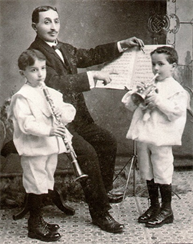
(a) Father Wulf with children Jack (*1896) and Harry (*1898) (trumpet); Photo ≈ 1903
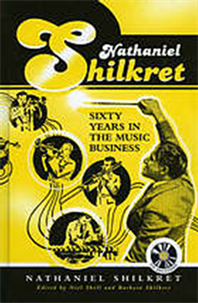
(b) Autobiography of Nathaniel Shilkret
Photo 7. (a) Father Wulf with his youngest boys: Jack (*1896) (clarinet) and Harry (*1898) (trumpet). Photo ≈ 1903. (b) Cover of the autobiography of Nathaniel Shilkret, Sixty Years in the Music Business, Scarecrow Press, Lanham, Maryland, 2005. Nat was one of the most influential American musicians of the first half of the 20th century.
5. Singultus and Sternutatio (Hiccup and Sneezing)
The two phenomena are mutually exclusive. Hippocrates (of Kos) (460-370), the Father of Western Medicine, states that sternutation curat singultu and also that singultumsanat sternutatio. The statement is repeated in various iterations throughout history by many such as Aulus Cornelius Celsus (≈25 BC-≈50 AD), Michael Ettmüller (1644-1683) and Sir Thomas Browne (1605-1682) to mention only a few [Hippocrates, 1537; Petroianu, 2015]. The mutual exclusion of singultus and sternutatio is a very interesting aspect, raising the possibility that the two have non-compatible triggers.
The common denominator of most, if not all of homegrown remedies to terminate hiccup is their ability to activate the vagus nerve, as evidenced by their additional ability to terminate paroxysmal supraventricular tachycardias [Petroianu, 2013, 2015; Petroianu & Lorke, 2020]. Among the best-known “vagal maneuvers” are the oculo-cardiac reflex (Dagnini-Aschner), carotid sinus massage, the Valsalva maneuver, and ice ingestion. The successful use of vagus nerve electrical stimulation for chronic intractable hiccups has also been reported [Payne et al., 2005; Longatti et al., 2010] as have been failures of this approach [Grewal et al., 2018]. Taken together the evidence suggests that insufficient parasympathetic activation might favor hiccups. In contrast sneezing appears to be facilitated by initial energic parasympathetic activity. A simpler but quite attractive proposition is that the hiccup is an abortive sneeze attempt.
6. Photo-Sternutatory Reflex
The observation that intense light can induce sneezing is probably as old as humans walking under the sun are. Aristotle (Aristotélēs) (384-322 BC) discussed the reflex in a section of his Book of Problems called Problems concerning the nose. He says sternutat,qui sub Sole se committit;sorsan quia calefaciens Sol nasi fibrillas,eodem modo,quo pluma quaedam titillate (in sun sneezing, warming by the sun has the same effect as a plume tickling the nose). The statement is repeated by Dutch physician Cornelis Stalpart van der Wiel (1620-1702) in ObservatioVI, a chapter dedicated entirely to sneezing in his work Observationumrariorum medic.anatomic.chirurgicarum, Observatio VI is titled Solitasternutatio ante actum venereum (Everyday sneezing before romantic action) [van der Wiel, 1717] [Photo 8].
Franciscus Joel primus (Joó Ferenc; 1510-1579), the Hungarian born pharmacist and physician, Professor in Greifswald, Duchy of Pomerania, in his Opera medica (published after his death by his grandson FJ tertius) states that Causaexterna sternutationis sunt radii orientis solis oculos ferientes (external cause of sneezing are the rays of the rising sun slapping the eyes) [Franciscus, 1635; Bencze, 1964].
In more recent days, Liveing mentions that although sneezing is ordinarly determined by irritations of the nostrils,a dazzling light may have the same effect [Liveing, 1873].
However naming a phenomenon can be at times more consequential than the observation itself: Jean Sédan (1891-1967) published 1954 a paper titled Photo-sternutatory Reflex, where sneezing induced by light (ophthalmoscope light, sun, photographic flash and Wood’s ultraviolet light) is described, the reflex nature recognized and the phenomenon named [Sédan, 1954; Askenasy, 1990].
Sédan was a distinguished French Professor of Ophthalmology at Marseille, prolific researcher having published some 250 mostly single author papers in the French language scientific journals. He married Simone (1898-1954), the daughter of French General Bauby (1866-1955). Simone, herself a physician of repute, was active in social services. A street in Marseille is named after her [Photo 9].
![]()
(a) Cornelis van der Wiel (1620-1702)
![]()
(b) Franciscus Joel (1510-1579)
Photo 8. (a) Cornelis Stalpart van der Wiel (1620-1702), Dutch physician credited with one of the earliest descriptions of what was to be later named Bell’s palsy [named after Sir Charles Bell (1774-1842)]. (b) Hungarian born Franciscus Joel (1510-1579), pharmacist and physician, Professor in Greifswald, Duchy of Pomerania.
![]()
(a) Jean Sédan (1891-1967)
![]()
(b) Simone Sédan-Bauby (1898-1954)
Photo 9. Jean and Simone Sédan; Jean named Sun sneezing Photo-sternutatory Reflex.
A catchier name was suggested by William Richard Collie 4th, Roberta Pagon and Judith G Hall (*1939) in a paper with Mohamed Shokeir (1938-2010) as senior author: Autosomal dominant Compelling Helio-Ophthalmic Outburst Syndrome = ACHOO Syndrome [Collie et al., 1978]. Obviously achoo is the onomatopoeic sound associated with sneezing in English. Hall proved her linguistic creativity again when she suggested another catchy name for a related curiosity originally reported by Ahmad Teebi (1949-2010) and dermatologist Qasem Al-Saleh, sneezing after a heavy meal. She morphed sneezing and satiation into snatiation and suggested the mnemonic (Sneezing Noncontrollably At a Tune of Indulgence of the Appetite—a Trait Inherited and Ordained to be Named) [Teebi & Al-Saleh, 1989; Hall, 1990].
Her creative ingenuity is certainly still greatly needed as sneezing can also be triggered by plucking of the eyebrows (palpebro-sternutatory reflex) and by sexual ideation [Etzine, 1968; Morris, 1987; Bhutta & Maxwell, 2008]. What about sexneezing while sexting?
Mohamed Shokeir (1938-2010), Egyptian born, received his medical degree from the University of Cairo. After postgraduate training in North America, the distinguished geneticist and pediatrician was appointed Professor & Chair at the University of Saskatchewan, Canada. Shokeir and Brazilian Sérgio Pena (*1947) are the men behind the eponymous syndrome [Pena & Shokeir, 1973] [Photo 10].
William Richard Collie IV: The Collie family is of Scottish descent; the ancestors arrived from Britain to Virginia in the middle of the 18th Century and descendants moved to Arkansas. The fourth William Richard Collie descends from William Richard Sr. (1869-1936) → William Richard Jr (1908-1939) → William Richard 3rd (1924-2009). He is a Tulane graduate, clinical geneticist and pediatrician in private practice in Arkansas.
Roberta A Pagon: Harvard Medical School graduate, she is Professor of Pediatrics at the University of Washington and medical geneticist affiliated with Seattle Children’s Hospital.
Judith Goslin Hall (*1939): A Bostonian, published more than 300 papers and described new genetic syndromes that bear her name Pallister-Hall syndrome (Philp David Pallister *1920) and Sheldon-Hall syndrome [Joseph Harold Sheldon (1893-1972)]. In 1981, she moved to Vancouver for a tenured professorship at the University of British Columbia (UBC). She remained on the research and teaching faculty there for the next 25 years. 2017 she was an Honorary Degree Recipient from UBC.
Samuel Etzine (1915-2004): South African ophthalmologist, graduated from the University of Witwatersrand Medical School 1938. After postgraduate training in England worked at the General Hospital in Johannesburg. Author of numerous scientific publications he coined the name palpebro-sternutatory reflex [Etzine, 1968]. He delivered 1976 the first DJ Wood Memorial Lecture at the Annual Congress of the Ophthalmological Society of South Africa [David James Wood (1865-1937)].
![]()
Mohamed Shokeir (1938-2010) Painying by Canadian artist Iris Hauser
Photo 10. Portrait of Mohamed Shokeir by Canadian artist Iris Hauser (reproduced with kind permission of the artist).
7. Photic Sneeze Reflex Genetics
Visual exposure to strong light may induce a sneezing reaction in about 20% of the individuals in the Swedish population [Beckman & Nordenson, 1983] and in 25% of a sample of the British population [Forrester, 1985]. Everett [1964] found it in 33% of male psychiatry residents, 28% in male medical students, and 16% in female Johns Hopkins medical students.
Taken together, the data from these early studies suggested that photic sneezing is much more common in Caucasians than in blacks, with a slight male preponderance. The inheritance appeared to be Mendelian autosomal dominant, as reflected by the A in the name ACHOO [Collie et al., 1978; Peroutka & Peroutka, 1984; Morris, 1987]. A 2010 study demonstrated a correlation between photic sneeze reflex (PSR) and a single-nucleotide polymorphism on chromosome 2 [Eriksson et al., 2010].
In a more recent genome-wide association study (GWAS) on PSR in the Chinese population the prevalence was at ≈26%, The authors concluded that together with previous GWAS in other populations,the result substantiated the polygenic and non-ethnicity-specific nature behind the PSR phenotype [Wang et al., 2019].
8. Chemical Sneeze Inducers
RemediaSternutatoria (sneezing powder) was a pillar of medical treatment of many diseases in the middle Ages. Antonius Chalmeteus (Antoine Chaumette) recommends 1560: Sternutatoriacomponentur ex pulvere pyrethri,piperis,staphydis agriae,veratri albi,euphorbij [component of sneezing medicine is the powder of pyrethrum, pepper, wild (sour) raisins, white hellebore and euphorbia]. Michele Angelo Andrioli (1672-1713) similarly suggests 1698 Sternutatoriaex pulvere nicotianae,pyrethri &radicibus hellebore albi. In late 16th- and 17th-century England, snuff tobacco was thought to be a panacea universally good for the body. For a comprehensive review see [Aloum et al., 2021].
Soren Sorensen “Sam” Adams (1879-1963) established 1904 the Cachoo Sneezing Powder Company in Plainfield, NJ and marketed until 1919 (when the FDA banned it) CA-CHOO sneezing powder. Nowadays sneezing powder use is rare, except as a prank of dubious taste or as a self-defense weapon of dubious efficacy. The main ingredient of the available products is hellbore (veratridine) [Photo 11 & Photo 12].
Pulvereveratri (hellebore)albi
Acting principle is veratrine. Johann Bartholomäus Trommsdorff (1770-1837) writes: DieserStoff (Veratrin)ist weiss,und pulverig,ohne Geruch,aber in die Nase gebracht,erregt er ein heftiges Niesen,welches sehr gefährlich werden kann;schon eine sehr kleine Quantität desselben bringt diese Wirkung hervor (This white powdery substance is without odor, but placed into the nose causes a violent sneeze which can be very dangerous, as even a small amount causes this effect).
Veratrine is a mixture of the alkaloids present in the Veratrum plants, primarily containing cevadine and veratridine. The German name of Veratrum album (white hellebore) is Nieswurz (Sneeze root). Unlike the typical 6-6-6-5 cyclopentanophenanthrene skeleton of the conventional, cholesterol based Solanum alkaloids, veratridine and cevadine display a 6-6-5-6 arrangement and are referred to as Veratrum alkaloids [Photo 12].
![]()
(a) Book cover of Sneezing Powder & Other Stories, illustrated by Ray Mutimer and published 1998 by Award. Enid Blyton (1897-1968) [Blyton, 1998]
![]()
(b) Sneezing powder for self-defense available on the internet
Photo 11. (a) Book cover of Sneezing Powder & Other Stories, illustrated by Ray Mutimer and published 1998 by Award. Enid Blyton (1897-1968) story starts with Onceupon the time there lived a brownie called Smarty. He kept a little shop in Hallo Town…His marketing strategy involved using in summer sneezing powder to lift his flagging sales of winter-flu medicine (b) Sneezing powder for self-defense available on the internet.
![]()
Photo 12. (a) Cyclopentano-phenanthrene (6-6-6-5) skeleton of steroidal Solanum alkaloids (b) homo-steroidal (6-6-5-6) skeleton arrangement of Veratrum alkaloids formed through bond migration from C-12 to C-13. For a superb review, see Chandler & McDougal, 2014.
The purification of veratridine was carried out by Solomon Morris Kupchan (1922-1976) at the University of Wisconsin, while the structure was elucidated by the group of Austrian born Oskar Wintersteiner (1898-1971) at the Squibb Institute for Medical Research.
Veratridine acts by increasing the permeability of neuronal sodium channels, causing them to depolarize repeatedly. Clinically this translates in dose dependent parasympathetic activation ranging from sneezing to vasovagal syncope [Bezold-Jarish reflex named after German physiologist Albert von Bezold (1836-1868) and Austrian pharmacologist Adolf Jarisch Jr. (1891-1965)] [Chandler & McDougal, 2014]. He is not to be confounded with dermatologist Adolf Jarisch Sr. (1850-1902), his father, eternalized in the Jarisch-Herxheimer reaction eponym. Veratrine components are highly poisonous; it was suggested that Alexander the Great was poisoned by his entourage using such alkaloids [Schep et al., 2014].
Many other compounds can induce sneezing. Recently, a comprehensive review of the topic was published: the authors conclude that the majority of the constituents of the sneeze-inducing remedies are modulators of transient receptor potential (TRP) channels. The TRP channel superfamily consists of large heterogeneous groups of channels that play numerous physiological roles such as thermosensation, chemosensation, osmosensation and mechanosensation. Sneezing is associated with the activation of the wasabi receptor TRPA1 (where allyl isothiocyanate is the prototypical ligand) and with the activation of the hot chili pepper receptor TRPV1 (where capsaicin is the prototypical agonist; Photo 13), in the vagal sensory nerve terminals [Aloum et al., 2021].
9. Fatal Sneezing
While generally sneezing can be anything from pleasurable to annoying it is rarely lethal. But lethal it can be. van der Wiel [1717] warns on page 49 of his Chapter on sneezing: utviolenta sternutatione arteria quaedam intra caput rumpatur,unde mors,dé qua vide.An increase in intracranial pressure is to a
![]()
Photo 13. The vaniloid capsaicin, the main activator of the hot chili pepper receptor TRPV1.
certain degree unavoidable while sneezing, but the attempt of suppressing the explosive exhalation can induce such pressure changes as to cause bursting of arteries. Many other case reports of life threatening complications after sneezinghave been published; suffice to cite [Reinhold et al., 2017] who describe the first documented case report of spontaneous splenic rupture that resulted after the act of sneezing.
10. Conclusion
The observation that intense light can induce sneezing is probably as old as humans walking under the sun are. Aristotle (384-322 BC) discussed the reflex in a section of his Book of Problems. The contemporary name of Photic Sneeze Reflex was coined by French physician Jean Sédan (1891-1967) in 1954. Photic Sneeze Reflex is much more common than generally realized, affecting to some degree about a fifth of the population. It rarely reaches however such a severity as to qualify as a disease. It is a physiologic reflex related to hiccups (singultus) and the two are mutually exclusive as pointed out by Hippocrates (460-370): sternutation curat singultu and also singultumsanat sternutatio.